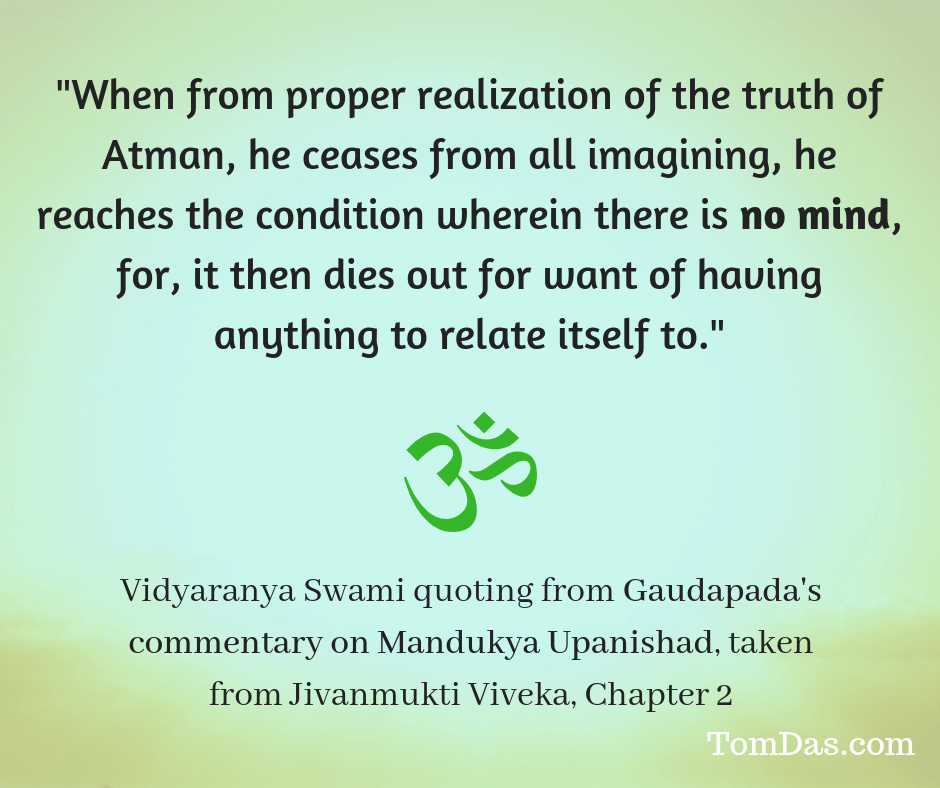Vidyaranya Swami (1296-1386), author of the wonderful Advaita Vedanta text Panchadasi and Shankaracharya (head monk) of Sringeri Math, wrote another less well known text called Jivanmukti Viveka. In it he, in some considerable detail, outlines the path to Jivanmukti, or liberation in this life.
In Chapter 2 he repeatedly makes the point that liberation or jnana cannot occur without both manonasa (destruction of the mind) and vasana kshaya (destruction of the habitual tendencies).
We shall now address ourselves to the means which lead to Jivanmukti (Liberation in this Life). These are Jnana, manonasa and vasana-kshaya.
He states that these three should be practised simultaneously. Throughout this text he quotes extensively from many authoritative texts to back up his view, this time quoting from the wonderful Yoga Vasishta:
Hence, in the Yoga Vasishta, Vasishta says, while dealing with The Body of the Jivanmukta at the end of the Chapter on Supreme Pacification: ‘Oh best of intellects vasasa-Kshaya, Jnana and Manonasa, attended to simultaneously for sufficient length of time, bear the desired fruit…
Vidyaranya then quotes again from Yoga Vasishta emphasising the need to practice these three for and extended period of time:
‘Until these three are not well attended to with sufficient and repeated trials, the Condition [Jivanmukti] can never be realised, even at the end of a hundred years.’
Here are some more quotes from Chapter 2 of Jivanmukti Viveka:





Also see:
The entire path explained: the Path of Sri Ramana
IN BRIEF: HOW TO ATTAIN LIBERATION (MOKSHA)
Shankara on the Mind, Samadhi (stillness of mind), Manonasa (destruction of mind), and Liberation

